A Musical Review: Instruments of the Folklife Festival
With dozens of musicians and dancers from two countries, the Festival boasted a wide variety of musical instruments in its performances. From traditional drums and cymbals to fiddles made with bicycle parts, here’s a roundup of some of the most noteworthy.
Morin khuur (horsehead fiddle)
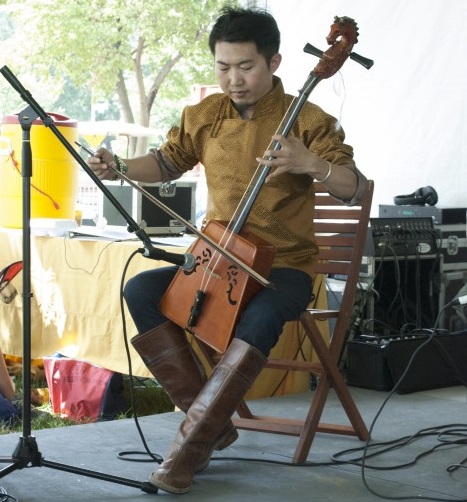
Origin stories for the Mongolian horsehead fiddle tell of a herder who, grieving over the death of his beloved horse, carved its likeness into the scroll of a new musical instrument. Three of the musicians from the Ih Tsetsn Inner Mongolian Ensemble are virtuosos on the morin khuur, which was originally made out of horse hide, wood, and over two hundred twined horse hairs. Ih Tsetsn’s instruments now feature modern adaptations such as electronic pickups, but the two-string fiddle still plays the same range of complex solo and ensemble melodies, whinnies, and nature sounds it did hundreds of years ago.
Qobuz
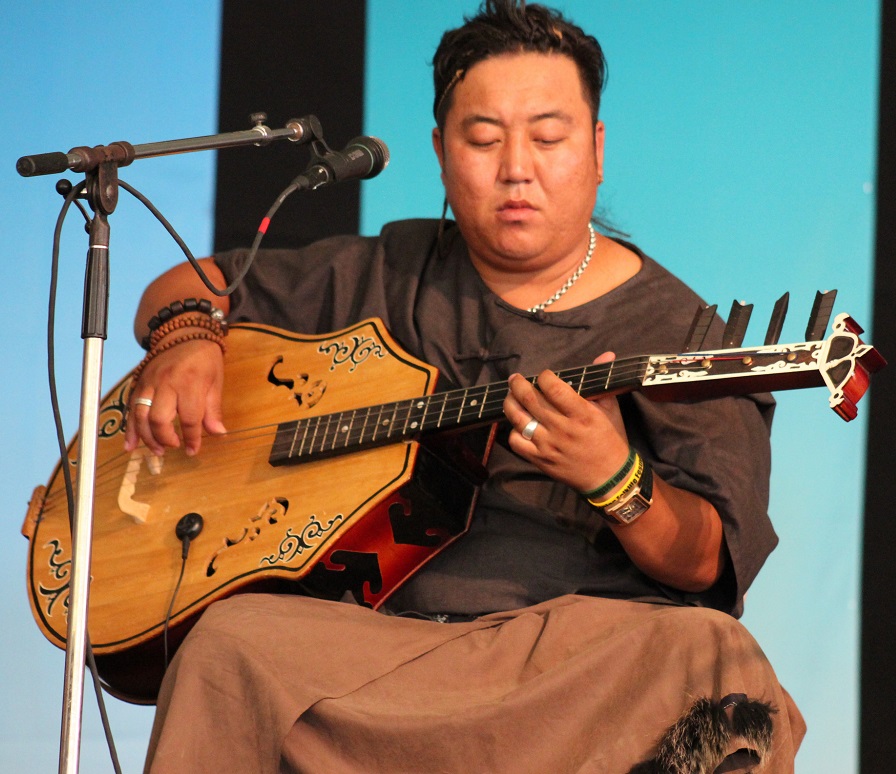
This traditional three-stringed plucked lute of the grasslands is another instrument not usually found on the National Mall. Ih Tsetsn musicians Dabuxilatu and Alatenggaridi have made personal adjustments to their instruments, such as adding a fourth string. The pairing of a bass and an alto version gives depth to the group’s complex harmonies.
Orutu
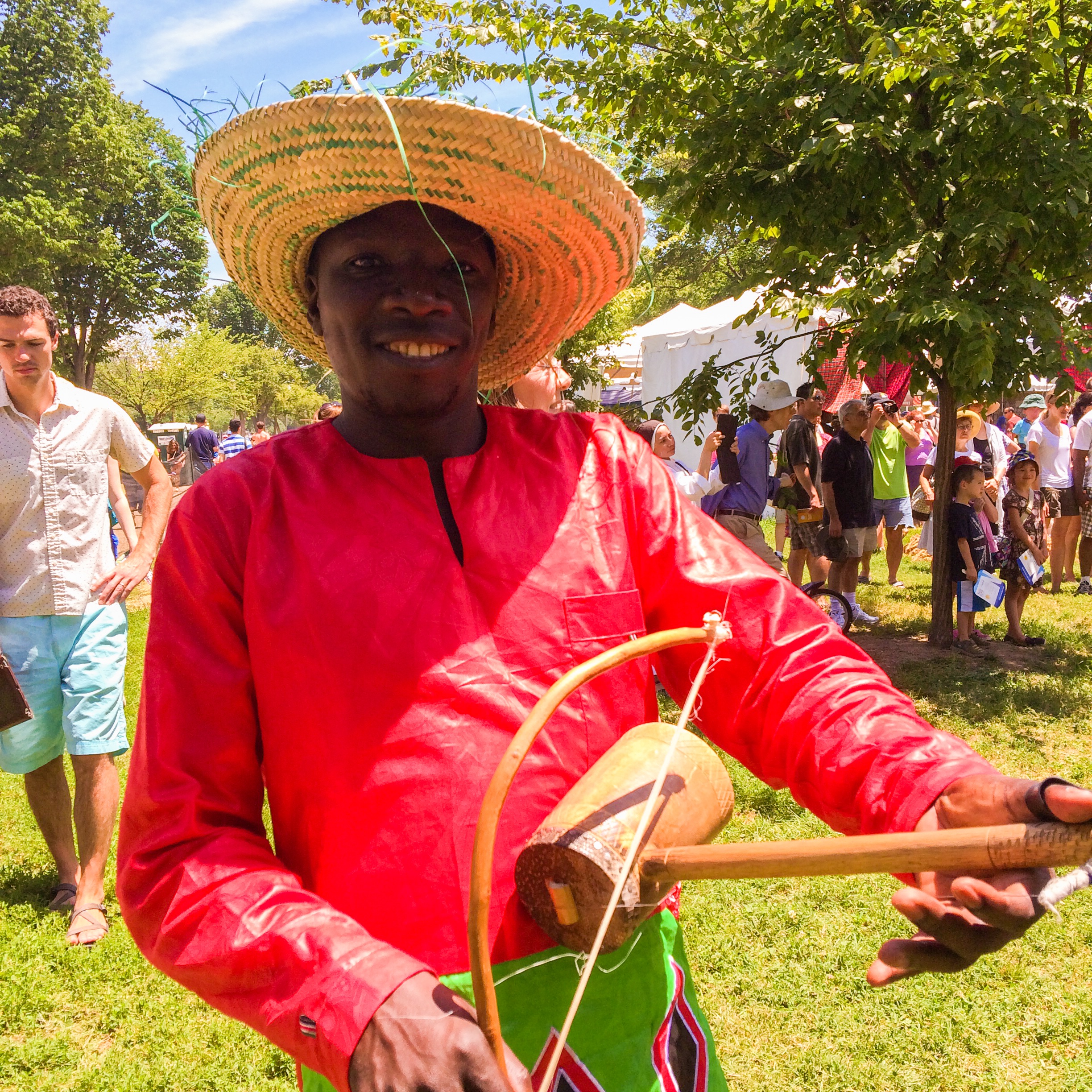
Like the horsehead fiddle, the East African orutu has become a melding of ancient and modern. Strings that were once sisal fibers are now made out of bicycle brake cables, but the head of the hand-carved wooden resonator is still the stretched skin of a monitor lizard. “We make the instruments ourselves, so from the beginning to the end you get the sound you want,” says Kenge Kenge band member George Achieng’ Odero. When Madeleine asked George what his favorite thing about the orutu was, he responded, “It’s easy to play!” So easy, in fact, that they were able to teach some Festival visitors—two women who had once been violin players—a few notes. George remarked, “It is important for us to share and teach others because the orutu is important to us, and sharing with them will increase that appreciation for this cultural instrument.”
Watch Kenge Kenge on the Ngoma Stage in one of their exuberant performances:
Lusheng
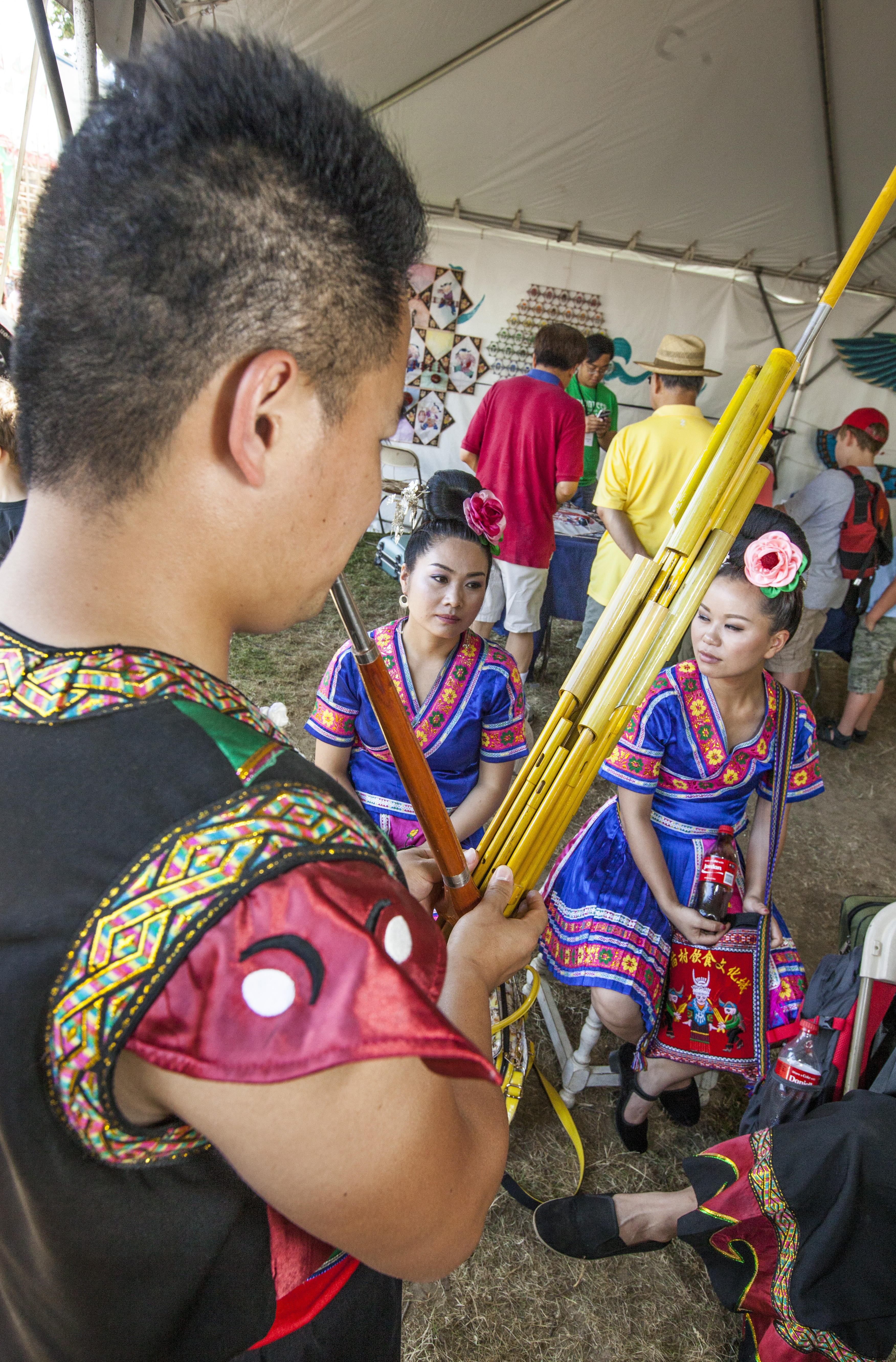
The lusheng is a bamboo pipe and reed instrument that comes from the Miao people of Guizhou Province, China. Known as a “talking instrument,” it is similar to other instruments around the world that use different pitches, sounds, and rhythms to convey words and meaning. For the lusheng, different melodies and phrases represent words in the Miao language. The lusheng is played in various instances, such as courtship, rituals for ancestors, celebrations, and funerals. The lusheng was played by two of the male Miao participants at the Festival, and even one woman, though it is not traditionally played by female musicians.
Luo and Maasai Horns
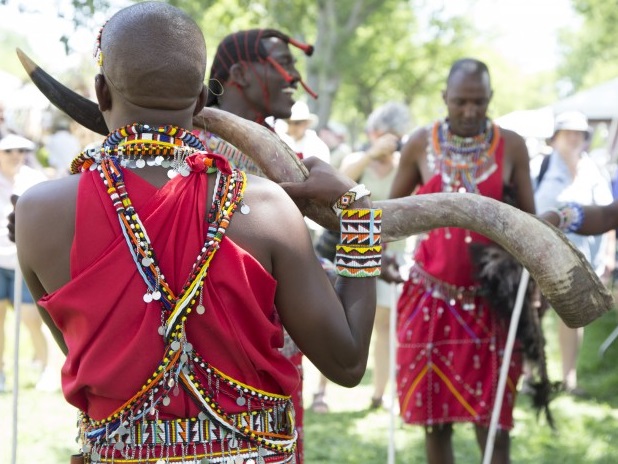
The animals of the Kenyan grasslands are an integral part of the sound, dances, and instruments of Kenyan music. Various ethnic groups use various horns in their music, which can come from buffalo or antelope horns, elephant tusks, or a combination of animal parts. The Luo version that Kenge Kenge employs is called oporo.
Kalimba
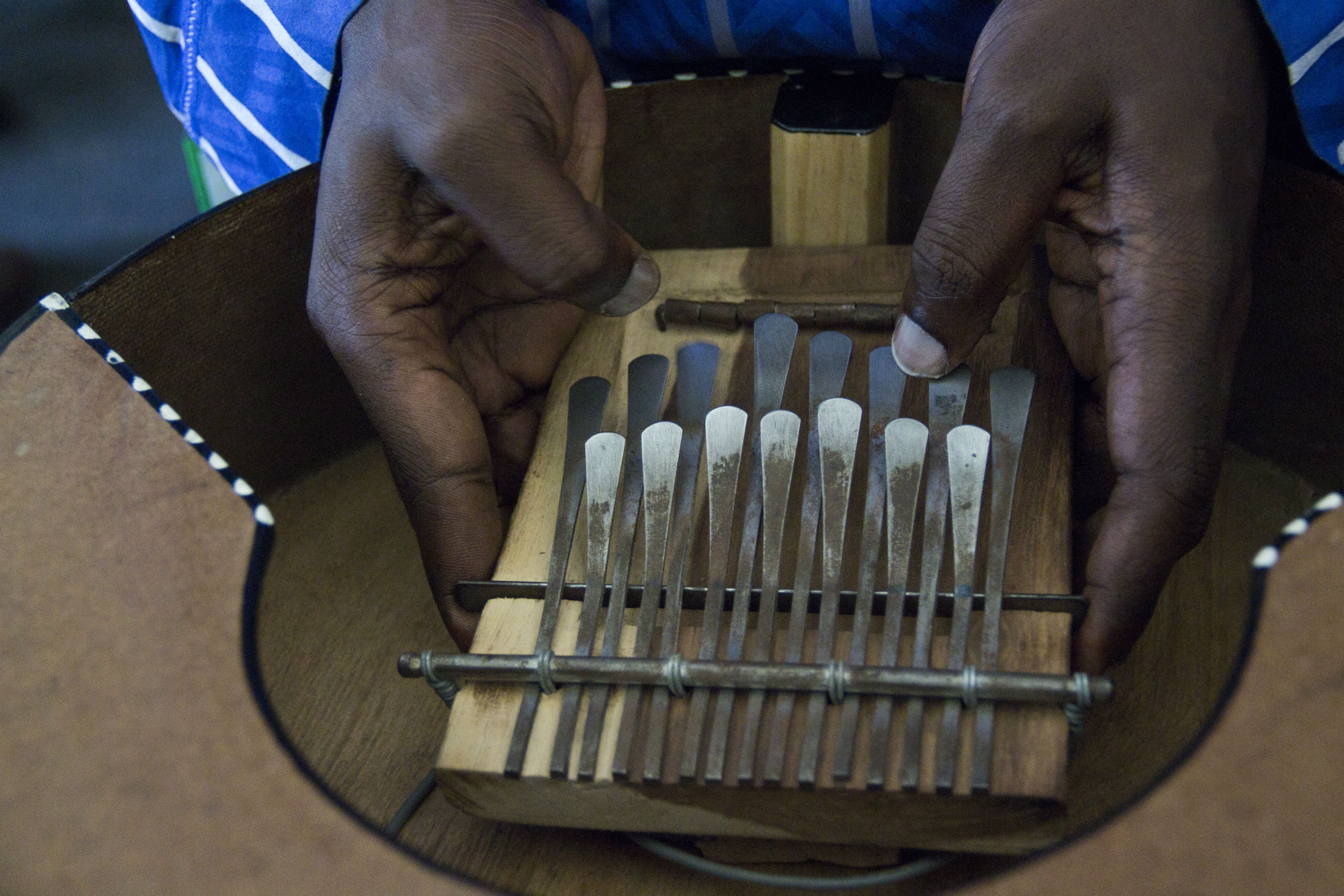
Kenyan benga performer Makadem could be occasionally found plucking this instrument in the downtime between concerts. It is also known in other parts of Africa as an mbira, or more generally as a lamellophone or thumb piano. Fifteen metal-plated keys and a row of resonators produce a plinking, buzzing sound similar to a metallic violin pluck.
Pipa
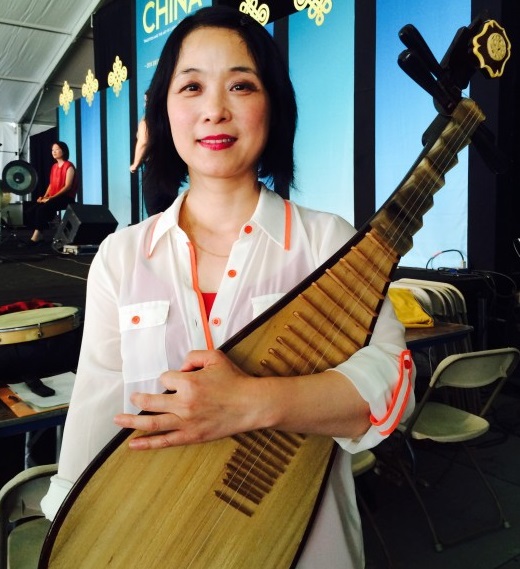
The pipa is a four-stringed plucked lute from China. While the pipa is perhaps the most iconic traditional instrument in China today, its origins likely trace back to Central Asia. Today, the pipa is mostly played by women in China. Wu Man, a pipa virtuoso and featured Smithsonian Folkways Recordings artist, presented an evening concert at the 2014 Folklife Festival with two other female musicians, Yang Yi on the zheng (a large plucked dulcimer) and Haruka Fujii on percussion.
Obokano and Nyatiti
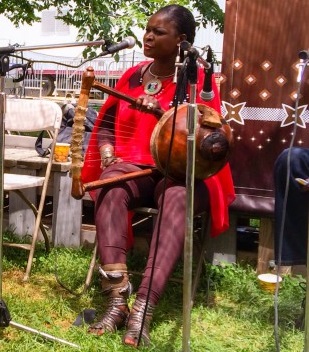
The obokano and nyatiti are similar instruments that originated in western Kenya. While the obokano comes from the Abagusii tribe of the Kiisi highlands, the nyatiti arose from the music of the Luo people. Though made from the same materials, they have a slightly different sound; for both, soft wood covered with cowhide serves as the resonator to eight plucked strings. Ontiri Bikundo, an obokano player, says, “The obokana is inherited. So like me, I just wake up one morning and start playing the obokano.” Things were very different for nyatiti player Suzanna Owiyo, who is one of the first women in Kenya to perform on the instrument traditionally played only by men. As Suzanna explained the tuning system of the nyatiti during one session, Ontiri chimed in that their tuning systems were the same. Suzanna remarked, “You can play with any group in the world if you have the right key.” (For more on that session, see “Groundbreaking Women of the Folklife Festival: ‘That Was Then, This Is Now'”.)
Here is another Kenyan participant, Job Ouko Seda, performing on the nyatiti in The Watering Hole.
Meg Boeni is a media intern for the Center for Folklife and Cultural Heritage who studies journalism and Spanish at Boston University. She feels privileged to have been a part of the Festival and met some of these outstanding international musicians—especially the Mongolians, who taught her how to dance.
Madeleine Yoder is the social media intern at the Center for Folklife and Cultural Heritage and a music and sociology student at Goshen College in Indiana. She would like to thank you for following along with her blog posts as she has explored the Smithsonian, the Folklife Festival, and D.C. for the first time on her own.

